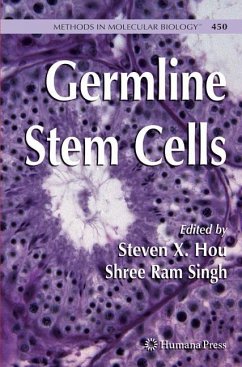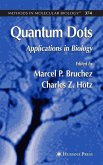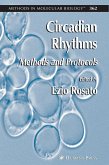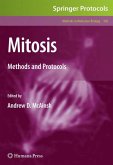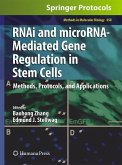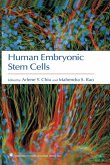In this comprehensive and cutting-edge book, leading experts explore the parameters that define germline stem cells and the mechanisms that regulate the cell behavior in order to better isolate, characterize and maintain them. The volume begins by providing protocols for germline stem cell identification and regulation in model organisms, and concludes with detailed chapters covering current techniques involving in vitro culture and the applications of the cells.
Stem cells are responsible for maintaining tissue homeostasis. They possess unlimited self-renewal potency. Through asymmetric cell division, a stem cell in adult tissues can produce an offspring that will maintain the stem cell populations and a daughter cell that will differentiate into various short-lived cell types to replace damaged or dying cells. Tumors may originate from a few transformed cancer stem cells. Stem cells have immense potential for therapeutic use in regenerative medicine and for developing anticancer therapies that specifically eliminate cancer stem cells. Germline stem cells are the source of human and animal reproduction. The knowledge gained from studying germline stem cells may find immediate application in preserving endangered wildlife, managing commercial livestock, overcoming fertility problems in humans, and treating testicular and ovary tumors. To make use of this potential, we have to learn how to isolate, characterize, and maintain germline stem cells. To isolate, characterize, and maintain stem cells, we must first understand the molecular parameters that define a germline stem cell and the mechanisms that regulate stem cell behavior. The protocols in Germline Stem Cells are intended to present selected genetic, molecular, and cellular techniques used in germline stem cell research. The book is divided into two parts. Part I covers germline stem cell identification and regulation in model organisms. Part II covers current techniques used in in vitro culture and applications of germline stem cells.
Stem cells are responsible for maintaining tissue homeostasis. They possess unlimited self-renewal potency. Through asymmetric cell division, a stem cell in adult tissues can produce an offspring that will maintain the stem cell populations and a daughter cell that will differentiate into various short-lived cell types to replace damaged or dying cells. Tumors may originate from a few transformed cancer stem cells. Stem cells have immense potential for therapeutic use in regenerative medicine and for developing anticancer therapies that specifically eliminate cancer stem cells. Germline stem cells are the source of human and animal reproduction. The knowledge gained from studying germline stem cells may find immediate application in preserving endangered wildlife, managing commercial livestock, overcoming fertility problems in humans, and treating testicular and ovary tumors. To make use of this potential, we have to learn how to isolate, characterize, and maintain germline stem cells. To isolate, characterize, and maintain stem cells, we must first understand the molecular parameters that define a germline stem cell and the mechanisms that regulate stem cell behavior. The protocols in Germline Stem Cells are intended to present selected genetic, molecular, and cellular techniques used in germline stem cell research. The book is divided into two parts. Part I covers germline stem cell identification and regulation in model organisms. Part II covers current techniques used in in vitro culture and applications of germline stem cells.
From the reviews: "This book provides background information and protocols for identifying, isolating, characterizing, and manipulating ... germline stem cells. ... This book is written for basic science and clinical researchers ... as well as those interested in development and reproductive biology. Biomedical scientists and clinicians ... will also appreciate the wealth of new information. ... This is an outstanding contribution to the literature in germ cell biology. ... will be valued by all those interested in development of the germ lineage and stem cell biology." (Bruce A. Fenderson, Doody's Review Service, October, 2008)

